#and photoshop over painting
Explore tagged Tumblr posts
Text

Here have a thing I made mostly with a trackpad. (Please don't use a track pad for art you will hurt your wrist)
#its mix of 3d model I made in C4D#and photoshop over painting#i can posts the wips if anyone wants#it was for school assignment so of course i picked phos#houseki no kuni#hnk#phosphophyllite#phos#dont zoom in or ask questions#thats my art tag#THEIR HAIR LOOKS LIKE JOLLY RANCHER
183 notes
·
View notes
Text



SPIRIT OF THE WEST: The Major Motion Picture
It's a summer evening in the late 90s and you and your friends are looking for something to watch at the slumber party. You go into your local Video & Variety and happen upon the coming of age romance, Spirit of the West. Let's hope this doesn't awaken anything in you....
SUMMARY:
Dean grew up on a horse farm and can't imagine any other life. There are drawbacks to working for his father, but they're worth it if it means remaining with his beloved horses. Besides, between his broken arm and his lack of prospects, he hasn't got much else.
Something of an outsider, Dean always feels like there's something he's missing. But this tense summer brings back a figure from his past: years ago, a teenaged Cas worked for a season at the Winchester ranch. His return could change everything.
Reviewers rave: "If you ever wanted a 90s horse girl book, but starring a young Dean Winchester, this is your flick."
Spirit of the West is written and directed by Teen_Dean / @urne-buriall
▶️ PLAY Spirit of the West ⏪ REWIND with Spirit of the West Prequel by @foolondahill17 ⏩ WATCH IT AGAIN with SOTW Daily 🌟 BONUS FEATURES ✨ Director's Commentary 🎶 The Official Motion Picture Soundtrack
#using the tags as my footnotes for a sec#this something i wanted to do *last year* but well. i didn't get around to it til now#spirit of the west means so much to me and in my mind it is a movie that we all can watch together on some summer night#the cover image was an insane process that started with a still from that horribly over-exposed video of young jensen riding a horse#i tried to do some photoshop editing on it. then ended up digitally painting over it#young cas was so tricky. so much of young misha does not look like cas to me#also don't look too closely at the manip 'stills' lol#and fun fact: the silhouetted image of the horse and rider on the spine is actually jensen from that video of him#anyways this was so fun to make<3#myedits#spirit of the west#sotw
555 notes
·
View notes
Text

Jonathan and the Three Brides
#dracula#bram stoker#dracula daily#re: dracula#jonathan harker#dracula's brides#dracula fanart#art#digital art#csp#clip studio paint#artists on tumblr#i'm playing a game called can i make all my dracula illstrations before dracula daily is over??#let's see#this was very fun to draw#i wanted to photoshop it onto the cover of a vintage book but couldn't find a good stock image of a book lol#they desire a SNACK
705 notes
·
View notes
Text

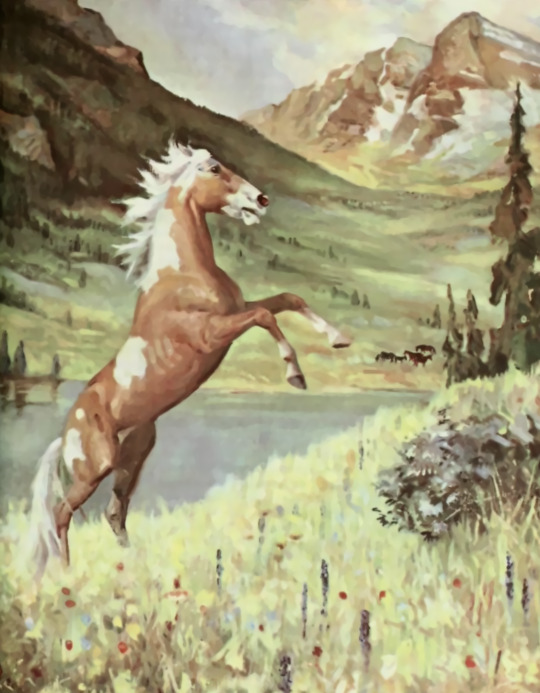

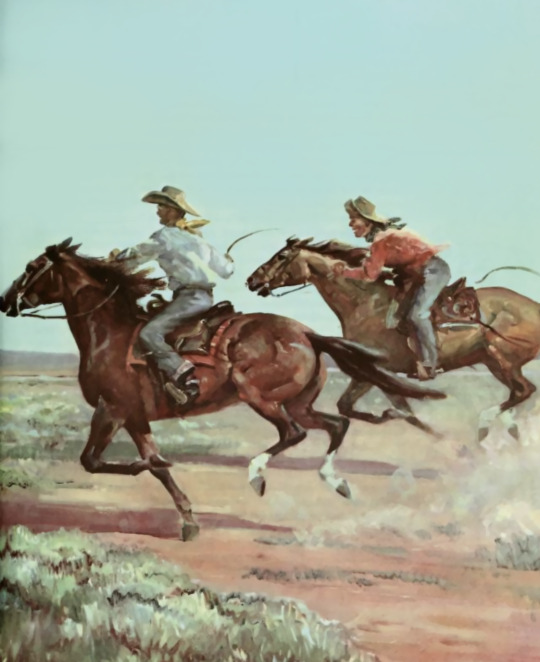
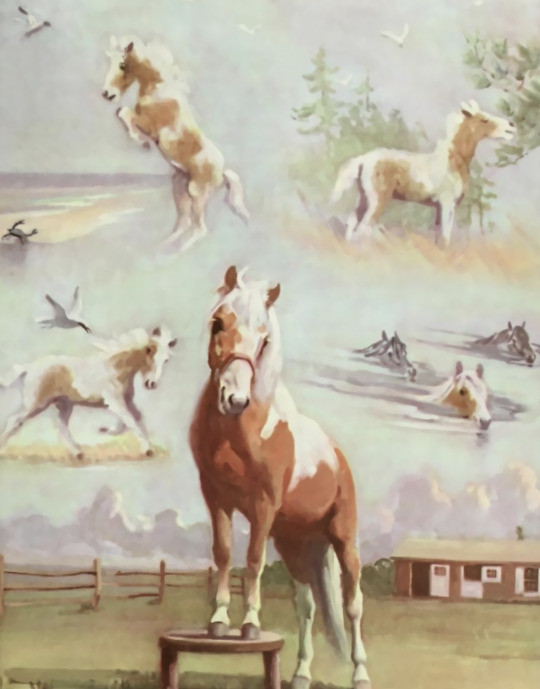
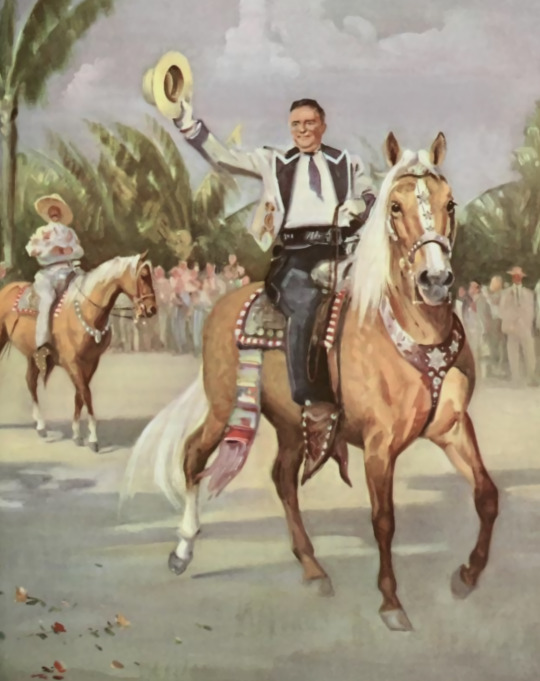
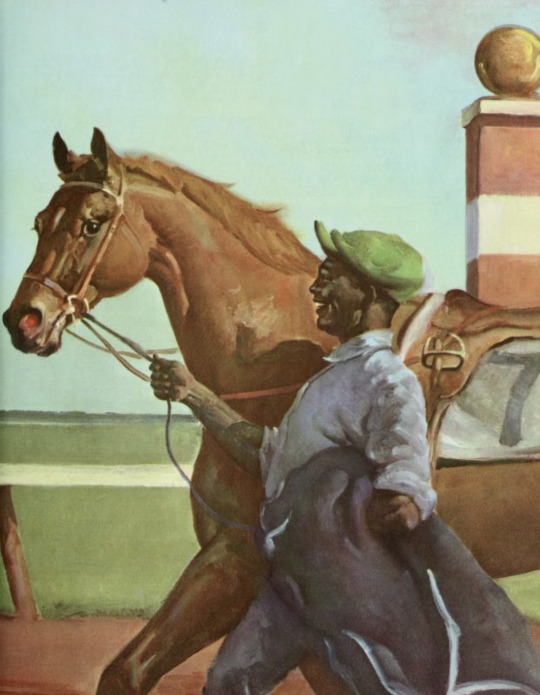
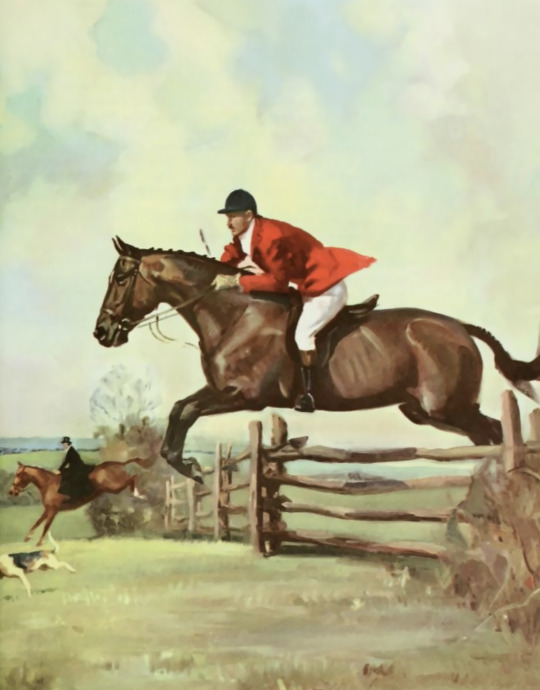
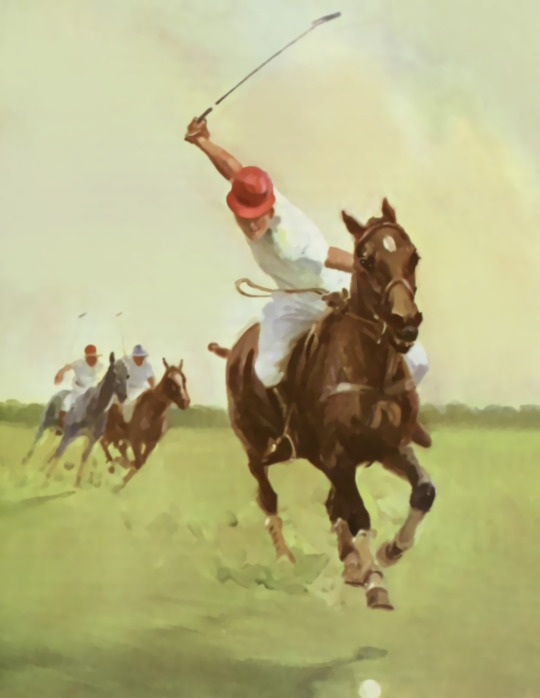
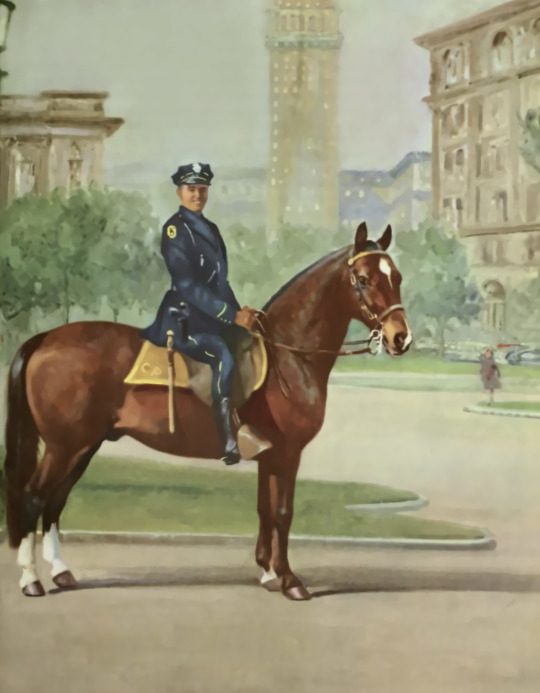

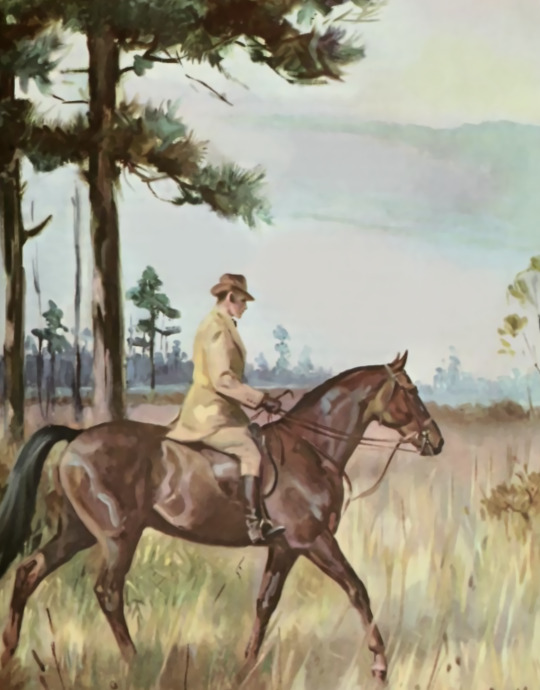

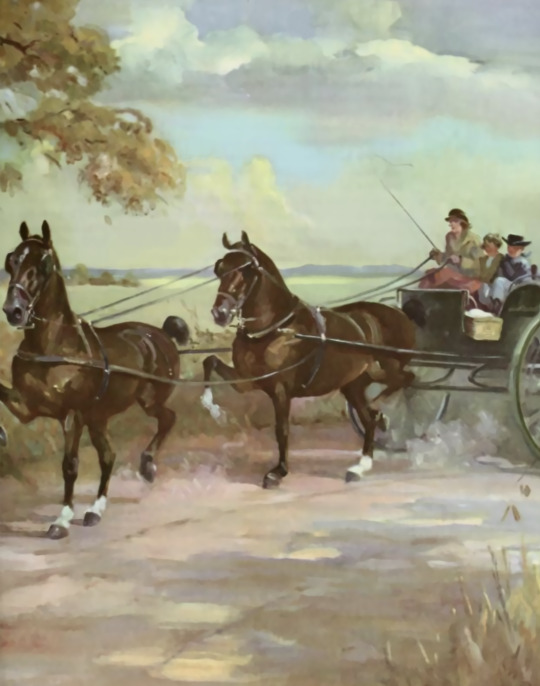
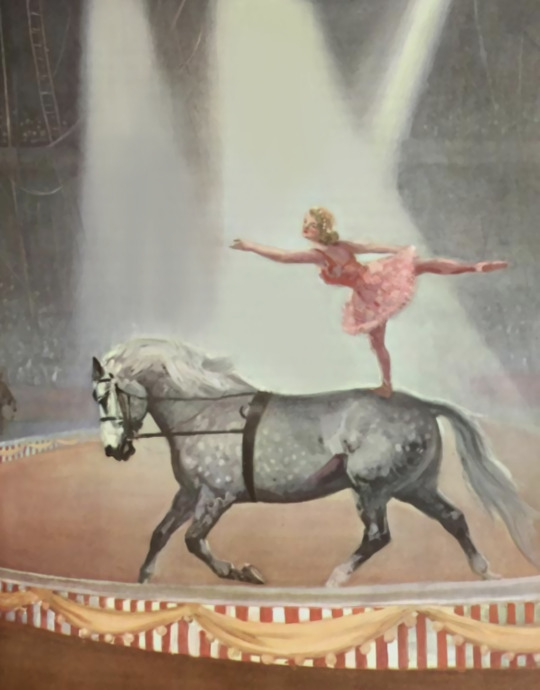

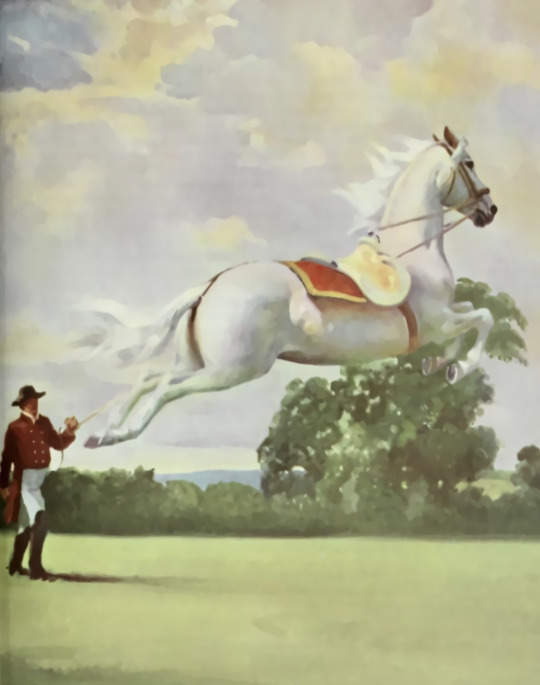

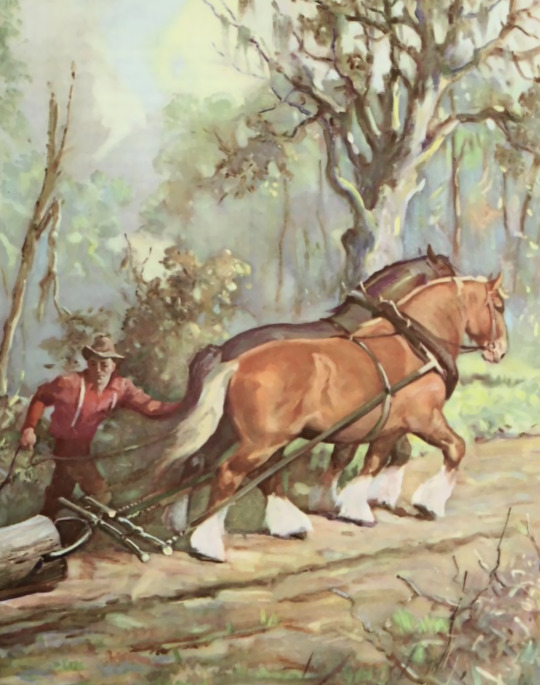
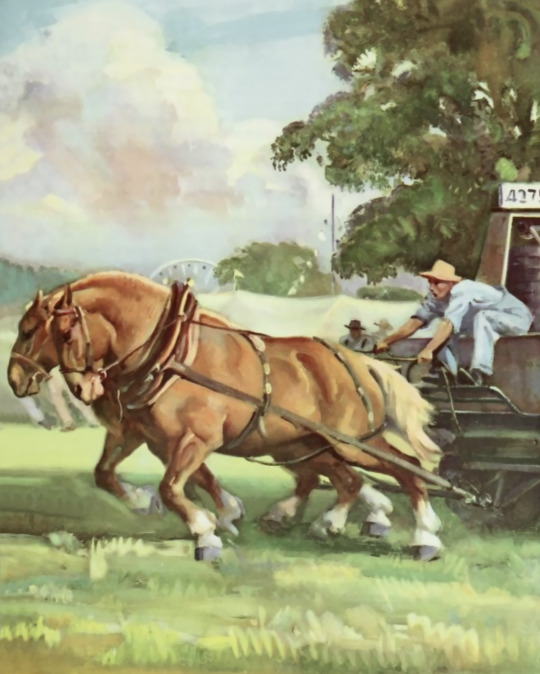
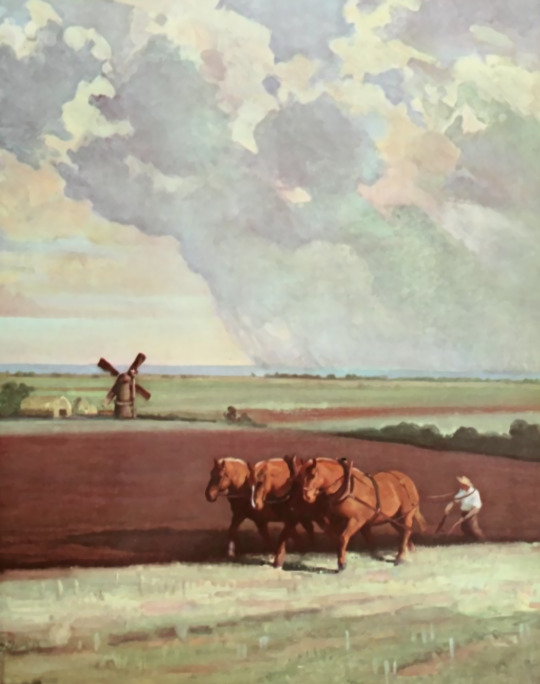
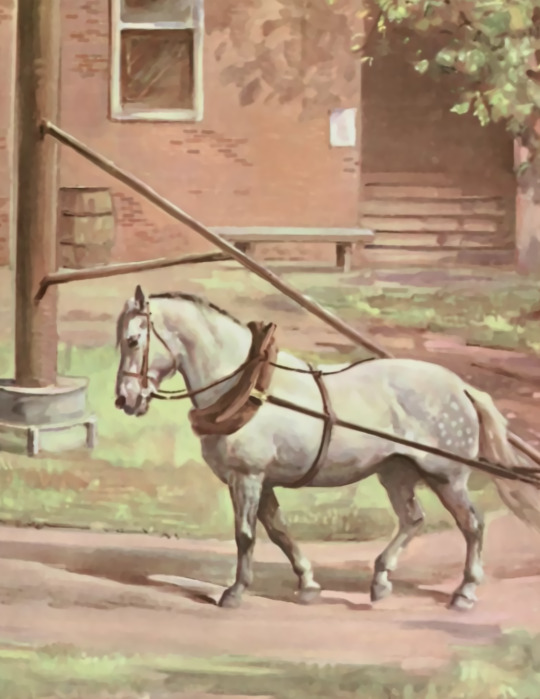
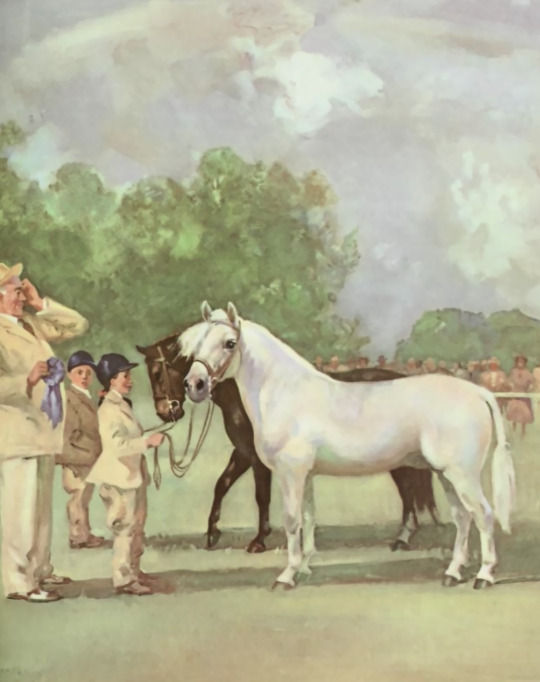



Album of Horses (1951) written by Marguerite Henry, illustrated by Wesley Dennis
#I AM SO HAPPY WITH HOW THESE TURNED OUT#like i really cant express the hours and months that came together as this one post#i learned so much about photoshop#i use photopia but you know what I mean#photopia#the one thing about wesley dennis that I will never get over#is the way he paints SKIES#like the clouds#the lighting#the pink and yellow and blues all together#the pastel colors just blending together to make the most nostalgic color pallets I've ever seen#wesley dennis#anyway#its tag time#album of horses#marguerite henry#horse art#horses#horse#equids#perfect for my horse blog#yee haw#arabian#equine#thoroughbred#horse racing#hunter#jumper#hunter jumper#fox hunting
170 notes
·
View notes
Text
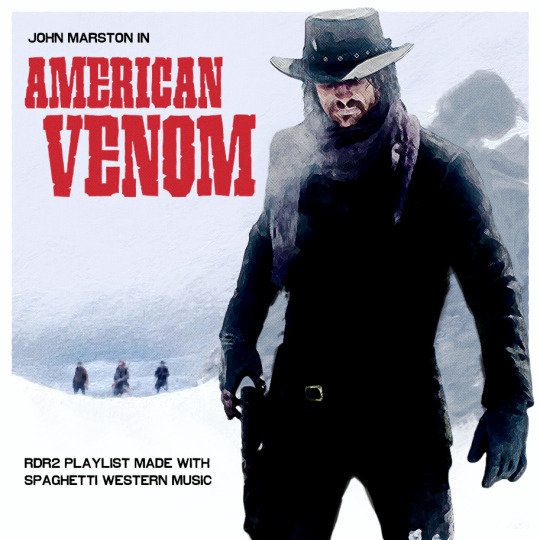

spotify | john marston's revenge quest, set to music from 1960s spaghetti westerns.
Fun detail: the opening cutscene for Red Dead Revolver (2004) features an instrumental version of "His Name Is King". The lyrical version is oddly fitting for John, given that it's a song about seeking vengeance for a dead brother.
#red dead#rdr2#john marston#arthur morgan#pardner playlists#pardner posts#tagging arthur in this bc even tho its a john-centric playlist.. its about the way john grieves arthur#y'all know me !!! im always a sucker for a revenge story!!!#so i cant help but dwell on johns attitude of ~i will throw away my chance at a future because i'm stuck in the past grieving you~#like thats a banger. thats a good revenge story. the ultimate act of devotion is also an ultimate act of betrayal.#this is admittedly a kind of pulpy playlist and im embracing that. im a fan of 'horse opera' westerns and im attaching that to epilogue joh#anyways. all the songs on this playlist were released btwn 1966 - 1971 so its definitely a vintage vibe.#i tried to match that vintage energy with the graphic design. the cover art is screenshots of rdr2 that i've /heavily/ edited in photoshop#i wanted the images to look like those oil and/or acrylic paintings done for old movie posters#it took a lot of filter adjustments and paint-overs to get to this stage. i spent a lot of time on it. (please clap)#i initially wanted john to be wearing arthur's hat for this but . hdkhjdf ran into some difficulties sourcing usable screenshots.#i refuse to accept unmodded epilogue john as canon. i dont know what you think that thing is but that is not my son etc etc.#its jmrp or bust for me#most of the jmrp screengrabs i could turn into a workable composition featured the john hat so i just went with that. unfortunate but mehh#sidenote. plz click for quality bc a lot of the paint texturing in these covers gets lost in the compression#alight yall. have fun with the playlist !! lmk if u end up giving it a listen.#rdr2 spoilers#🤠#art
481 notes
·
View notes
Text




Made edits of an Older!Daigo concept. It's more of a reference for myself really 👀
#my edits#i mean...im sure i could've done more but Photoshop doesn't work 100% on this laptop and this is all i could paint over in krita#ryu ga gotoku#daigo dojima#like a dragon#Yakuza
20 notes
·
View notes
Text
📝 Did you know that Clip Studio works with the same filetype of brushes as photoshop (.ABR)?
Just download your brush and drag it into CSP's brushes window!
(note: a lot of photoshop brushes online are stamp-style, don't be surprised if this is what it turns out to be!)
CSP ver.1+
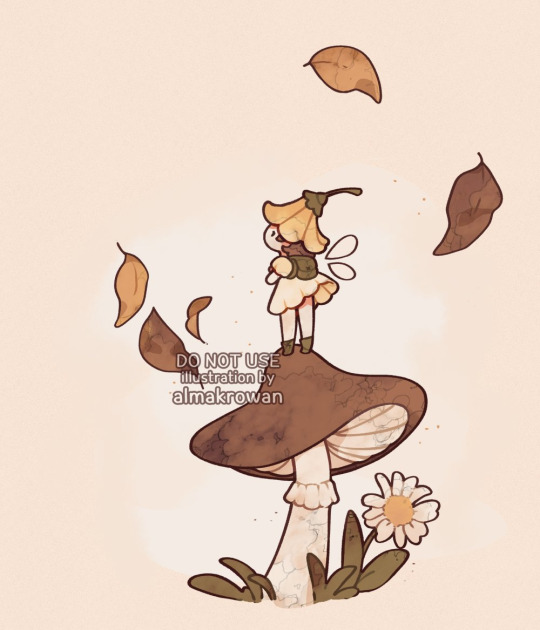

#almakrowantip#CSPwithAlma#digital art#art resources#clip studio paint#you can get all the years worth of free photoshop brushes from all over the web!!!#just think of the possibilities!!
98 notes
·
View notes
Text


Took a shot at that style thing mmmm
#rain world#rw spoilers#five pebbles#rw survivor#i think i'd need to define the details/shading/textures on the cutscene ones more to fit the style better#at least the pebbles one lol. I did that one first#but it's alright for now#i need to explore my main art program's capacity for brushes and textures more#(it's paint tool sai 2)#it's all a bunch of settings instead of nice brushes you can just import#and is overall just... more limited imo#i wish it was like more like csp or photoshop in that respect#i have to port files over to those to do more heavy-duty backgrounds#or use filters more advanced than gaussian blur. -_-#oh yeah also. i was basing “cutscene” off of vanilla style#and since pebbles only has like one distant picture there#i reffed off moon more for him#i could nitpick at this for hours tbh#art#flickerdoodles
257 notes
·
View notes
Text
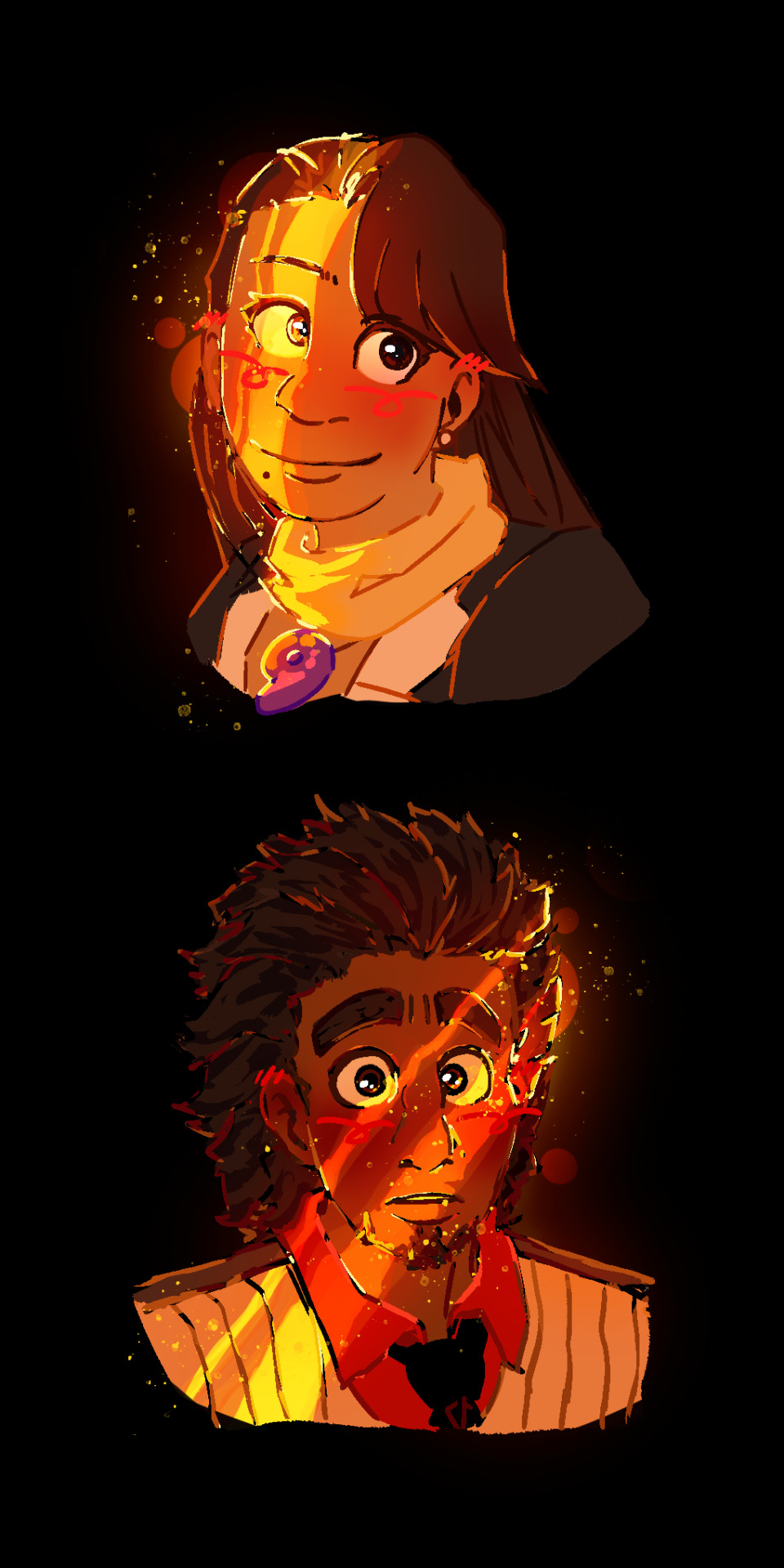
im really normal about them <- lie
#ace attorney#mia fey#diego armando#miego#lorillee.png#THATS RIGHT BABY. AFTER -um . hold on. *checks notes* - SIX MONTHS. LORILLEE IS BACK WITH PHOTOSHOP ART ��💥💥💥💥💥💥💥💥💥💥💥💥💥💥💥#every now and again i like to put effort into something just to remind everybody that i can actually draw#well i say that but to be honest i put a lot of effort into those ms paint ''diego fey REAL'' doodles#but half of that is just because humans are a . something. to draw. and urban backgrounds are my worst nemesis#and also trying to work with ms paint to like slightly transform things is an incredible pain in the behind#anyways. yeagh 😎👍 behold the power of miego. getting me to actually finish something in photoshop for the first time in months#anyways. ive discovered the secret to getting me to draw stuff on photoshop. prepare yourselves accordingly#what i need to do is sketch & line something in ms paint. and then directly trace it over into photoshop#and then i can go ham#see because the reason i never did this before was because i would sketch things in ms paint#and try to line them in photoshop and it simply Wouldnt Work.#so i had assumed that if i wanted to draw in photoshop id have to sketch in it first. yknow. which i cannot do for some reason#something about the way the pen feels and the . its like the smoothing setting is on even when its on 0 percent. you know. anyways#but with this one i drew mia in ms paint as per usual . and i wanted to mess around with color & light#and i triedddd to do it in ms paint but unfortunately as you can probably imagine. doing stuff like this without layer filters#can get a little difficult. if you know what youre doing its obviously going to be easier but that being said i do not#when i pick colors i am literlaly just wildly guessing 😭🙏 which is fine for more straightforward coloring/shading#but not quite here. which is why i wanted to take a stab at it in the first place#so anyways i was like FINE WHATEVER and tried tracing the lineart in photoshop so i could take a stab at coloring in there#and i was . enlightened. (no pun intended). it WORKS#so anyways . you may actually be able to expect. some photoshop art from me#well ok thats a lie never expect art from me. but we can all dream together#anyways they really are the star-crossed doomed by the narrative romance ever. everything to me
186 notes
·
View notes
Text
Thorin Oakenshield's Very Important Sparkles, as I've drawn them over the years
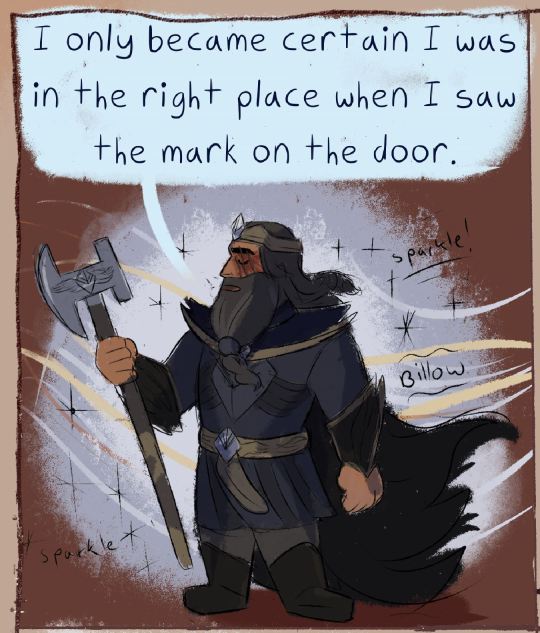
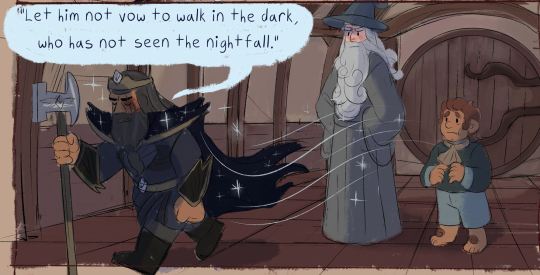
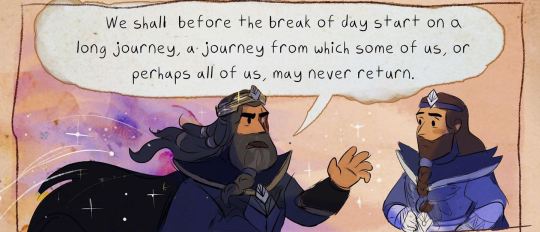
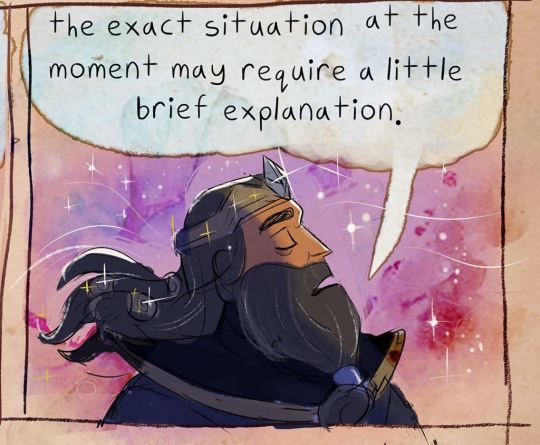
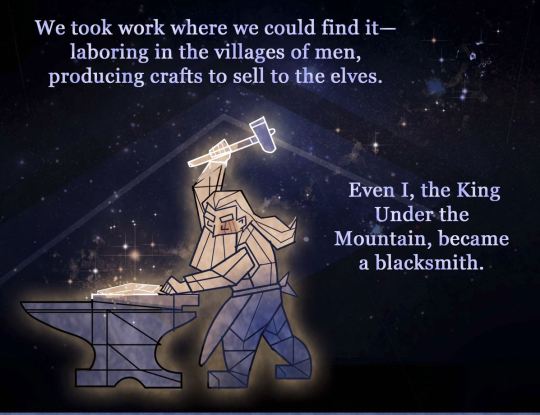
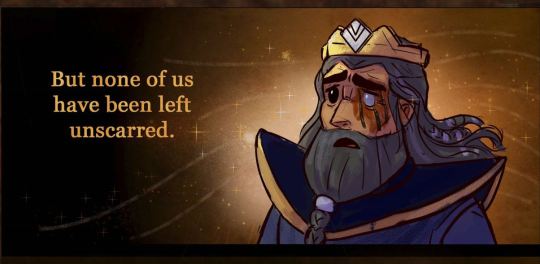
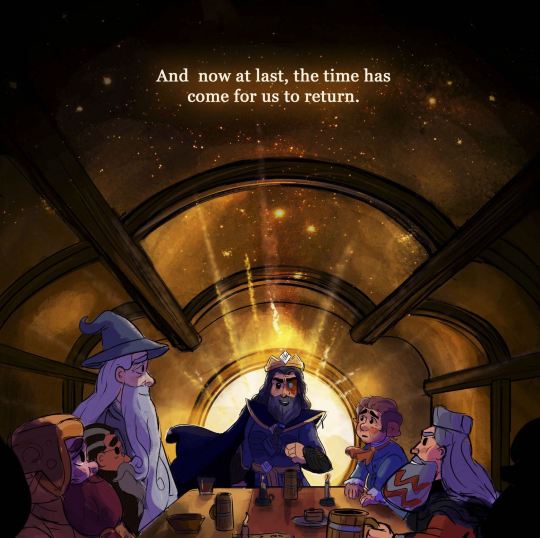
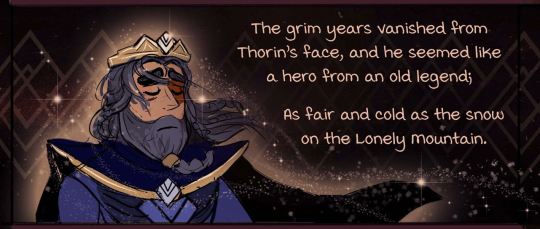
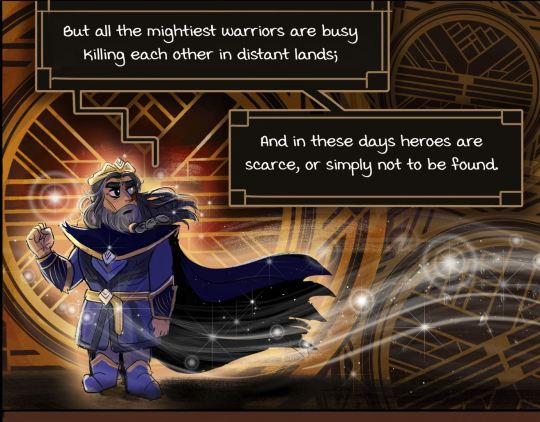
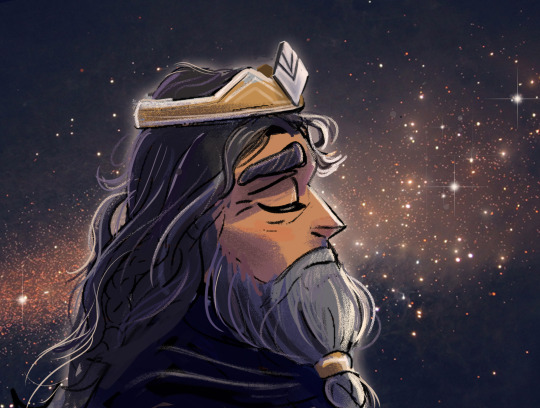

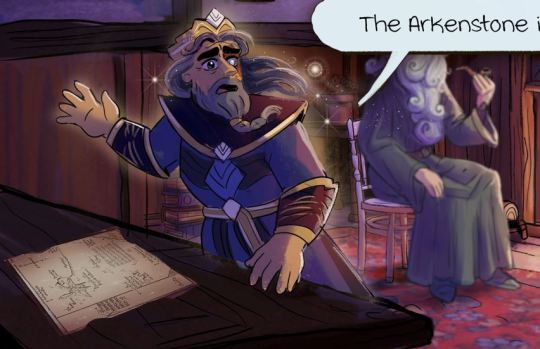
#the hobbit#the hobbit comic#thorin oakenshield#retelling the hobbit#the last two are sneak peeks of a future chapter !! < 3 not posted yet#i will add on to this post as i draw more#(i didn't even include all of them)#also wow were my early pages desaturated#i wonder if i accidentally exported them wrong from photoshop/paint tool sai?#bc I think that was back when I used paint tool sai#and I think converting a sai file to photoshop mightve desaturated it without me knowing#love how my art has colors now#anyway i started this comic with the idea id be able to watch my art evolve naturally over time#but i am surprised pikachu about my art evolving over time#not chapters#wip
197 notes
·
View notes
Text
Anyways~~
Guys look 🥺 i drew my animal crossing character on my phone 🥹

isn't it she adorable 🥹🖤
#yes i did trace over the original screenshot. sue me#i'll have you know my wife is my lawyer and she will kick your ass#drawing on the phone from scratch isn't the easiest okay? let me have this#i want to make a custom drawn map for my island and i know i can't trust my pc (very old)#(will explode if i keep photoshop open for more than an hour) (very slow) (over a decade old)#so i am toying with these drawing apps and this is one is my fav so far (ibis paint!)#i should've zoomed in before doing the linework but oh well#acnh#animal crossing#animal crossing new horizons#darya does art#<- sure it can go there
14 notes
·
View notes
Text

A young Senator Letant, back when he was a lowly Erein in the Imperial Navy.
#Senator Letant#Letant#Star Trek#Romulans#Star Trek DS9#David Birney#Helmet hair for days son#photomanipulation#painted over a photo in photoshop#I'm pretty happy with how this came out#The brow ridges are hard to make pop without looking silly
48 notes
·
View notes
Text
Recently played Falling Lights (@fallenlightsif) from the very beginning and I can't stop thinking about this:

Do you think that Emilia misses when the MC would braid her hair? Do you think she's touch-starved for when they would sit together, knees brushing without realizing? Or a casual shoulder bump or friendly hand-touch?
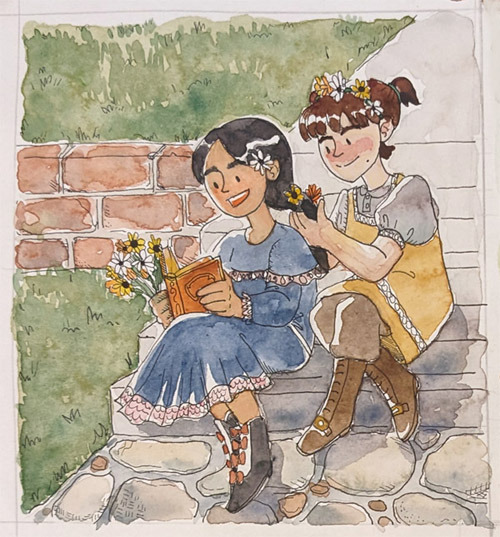
I think I have a problem when I think about childhood friends who later hate each other, or fight or become enemies. Hell, even if they lose touch and stop being friends. (MY PROBLEM IS THAT I LOVE IT)
My MC is Mirabelle and I'm actually also working on her adult face, hair and outfit (slowly).
#help i'm drawing#fallenlightsif#back to watercolor my favorite medium#except when i get a little green (???) on my brush when I'm mixing emilia's face and don't realize it#sooooo she looked just a little ogre but i'm not starting over#so then i have to fix shit in photoshop#totally love working with paints!!!! HAHAHAHA?
111 notes
·
View notes
Text

David Tennant-Digital Paint.
So this day and age I have found myself becoming reluctant to share my digital art, I think it boils down to the fact that the last time I showed my art to someone I was instantly shot down with the old
"But it's not real art though is it? It's cheating because it's using the computer"
*Sigh*
Yeah it hurt like hell, especially since the comment was made by a relative. However, as much as my demons try and stop me doing what I love, I fight them and keep them quiet for a time while I work in peace.
So this is the latest victim to my digital canvas. Mr Tennant, I wanted to do him in black and white with Red accents, mainly because he is in the Scottish play again and I am going to go and watch him and yes I do want to try and get this signed but I am not holding my breath, I know for a fact there is going to be a queue as long as your arm by the time the show is done. Let's just hope the Gods shine some luck down on me.
Anyway, feel free to lay eyes on this, I'm not the best out there but I am content with how this looks.
Much Love.
#David Tennant#Fanart#Digital Art#Digital Painting#digital aritst#Photoshop#Art#Dr Who#the scottish play#Well shit it's over a month away
11 notes
·
View notes
Text
I got myself the stupid John Constantine Pop Vinyl and god damn it, he was lonely, so I got him a Zatanna to keep him company. Unfortunately, John still seems lonely.
So, I decided to bust out my old pop vinyl modding supplies and make him a Noah Ikumelo to keep him company. I am loosing my mcfrikkin mind trying to find a head I can live with.
Based on the design Jesncin did for the DC Gotcha for Gaza, which looks like it was modeled after the Scrubbing Up outfit, I think this would be a cute, quick mod (though he might end up keeping Hobie's earrings, I expect they'd be a pain to remove cleanly and frankly, I think Noah could rock it).

I expect that if I do decide I want the hoodie look, I'll just make the hair instead, so I probably won't use this body at all, but I'm putting them out there as a visual aid. And for funsies, because every child deserves a pet, if he's wearing the Scrubbing Up outfit, Noah needs to have a murder raven.
The closest I've gotten to being happy with the hair is with the Hobie Brown pop from Spiderverse, but those are wicks more than locks, and while they look AMAZING for Hobie, they don't feel right for Noah.

Every time I find locks on a pop it has a headband or a weird hat or some kind of facial mod, and I'm sure I could sculpt the hair onto a smooth head I already have, but I prefer a premade head for a smoother look.
#Noah Ikumelo#Hellblazer fanart#I am not a photoshop person in the slightest#and this was a quick and messy paint over#This also means I have to wait until October to make it#But John is lonely NOW
7 notes
·
View notes
Text
Daft Punk in Chronic'art 2007/2008 - scans & translated interview


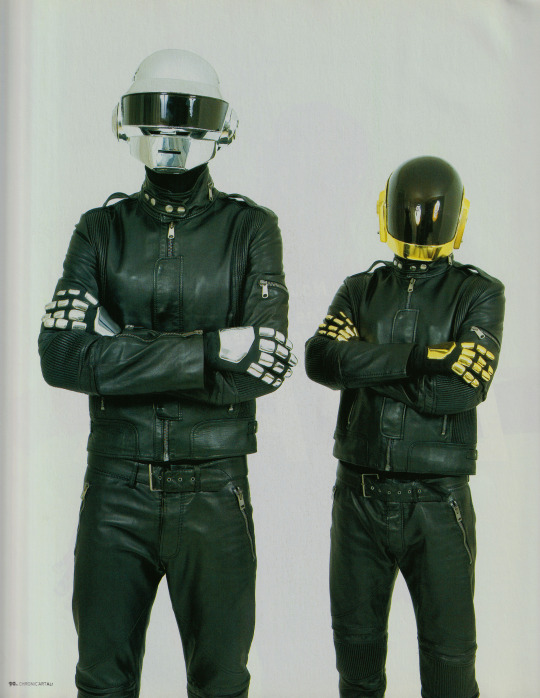
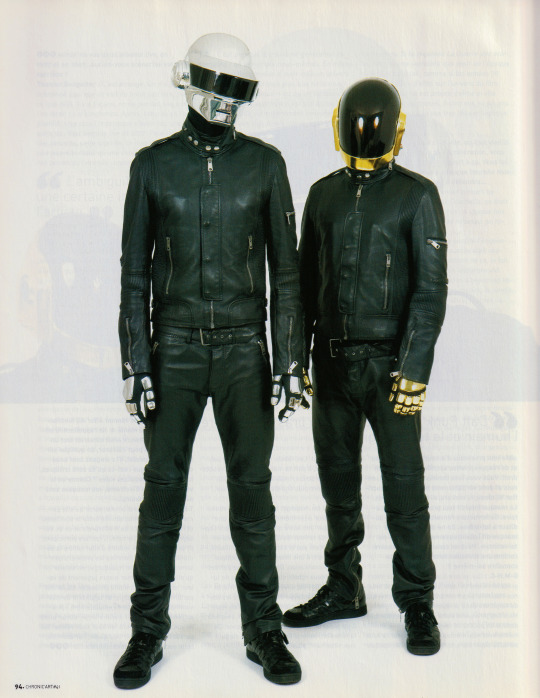
Here it is, the long-awaited monster interview that sat untouched on my bookshelf for 6 years. I bought this magazine on eBay in 2017, fresh off the Grammys performance with The Weeknd, and I was really excited when I realized it was a huge 10 page spread... Until I started translating and realized the content was extremely in-depth and complicated. So, it got put to the side and accidentally left there for many years.
Anyway, here we go. Buckle in for a long read! Please note that I did not translate the extra sections of the article titled "Discovered" and "Very Disco" as these are just basic information about DP's discography and samples they've used- they are not part of the interview.
My usual disclaimer- I am not French, nor am I fluent in French, so some of this may be incorrect or interpreted differently than the author intended. If you find any glaring errors, my ask box is open for feedback and I can update the post/files as needed. (Post updated May 2023 with corrections)
Feel free to repost to other platforms/social media sites, but I humbly beg that you link back here or give me credit because I really spent a lot of time slaving over this (like 50+ hours).
Thank you so much for sticking around my blog after so many years. I really appreciate this fandom and community and I'm excited to experience new music with you all soon!
(Trigger warning for discussion of suicide [Electroma] in the interview!)
Download full scans and translation at my Dropbox.
Full translation below the cut.
In ten years, from Homework in 1997 to Alive 2007 and Electroma, the electro duo Daft Punk have popularized electronic music, launched fads (the French Touch, filtered house, monumental live shows), and transformed a simple music project into a verifiable universal, even metaphysical, concept. Are Daft Punk dropping the helmets?
BY: WILFRIED PARIS & OLIVIER LAMM | PHOTOS: © MAUD BERNOS
SCANS AND TRANSLATION BY STEPH @ ONE-ADDITIONAL-TIME.TUMBLR.COM
(Please see the downloadable PDF file for translation notes/comments)
Everyone has been hearing about Daft Punk for the last two months, because their live CD (Alive 2007, from EMI) and the DVD of their robotic road-movie Electroma are being released for the holidays. We wanted to go a little bit beyond the obligated promo, and the repeated wooden language found in all the media, by trapping Thomas Bangalter and Guy-Manuel de Homem-Christo for an hour and a half in a restaurant in the Latin Quarter, subjecting them to questioning, and if possible, making them drop the helmets a little bit, over ten pages and many questions.
We’re not going to harp on what you already know (the French touch, the robot helmets, the live pyrotechnics), we’ll just say that we wanted to do this thorough interview with Daft Punk because they’re more than a CD or a DVD, more than music, more than any current pop group. They are an essential symbol of our post-post-modern times, speaking in a very clear yet always paradoxical voice (between hedonistic joy and profound existential sadness) on the human condition, no less. Over the ten years of their career (Homework, like Chronic’art, again, decidedly, appeared in 1997), Daft Punk have invented a new way of presenting music to the world. The robot helmets reveal (social uniformity) more than they cover (buried humanity) and have given them perfect anonymity, which seems like the anonymity of those who succeeded, not in annihilating the self, but becoming self-less. This anonymity accentuates the dominance of the art over the artist, and it has made Daft Punk a universally well-liked and famous group.
A conceptual, pop, philosophical, even metaphysical group, Daft Punk mixes Andy Warhol (seriality, pop art, emptiness) and Friedrich Nietzsche (the man who wanted to die in Electroma, the superhuman for and against technology), mass culture (disco, Albator, Star Wars) and esoteric symbols (the masonic pyramid), the dancing body and thinking brain. In that respect, they are a purely manufactured product of our culture and likely represent the completion of the pop figure began by the Beatles: fragmented culture (the sample) and repetition, theatricality and abstraction, universalism and experimentation, technological innovation and advanced marketing, refusal of the embodiment and worship of the personality…
The current tour (Alive can also mean “en vie”) also refers to an interstellar voyage, like Discovery and Interstella, which seemed to mean that humanity is, by nature, dispossessed, that humans do not belong on Earth but came from Heaven and are destined to return there, that they are “stardust.” They themselves [Daft Punk] are probably not aware of the symbolic and almost metaphysical significance of their creations, and they always prefer to talk about “emotions” rather than thoughts, the heart instead of the head, and they act as the “guinea pigs” for their own experiments. Listening to them, we realized that Thomas Bangalter and Guy-Manuel de Homem-Christo do not really theorize their work, their music, or their image, but that they react to the infinite accumulation of data from our culture of abundance, that they are indeed the guinea pigs of an experience that has outrun them, marionettes played by “high culture,” pop culture, and the entertainment industry. Maybe Daft Punk really are robots, and no one is pulling the strings, certainly not them.
Chronic’art: Between Homework, which would correspond to your schoolwork or your learning phase, Discovery, which would represent your adolescence, the discovery of the world, microscopic to macroscopic, and Human After All, a moment of reset before a new cycle, it seems to us like you have come full circle, which would be represented by the mirroring of your two live albums, in 1997 and in 2007. Could you have scripted your career?
Thomas Bangalter: It’s strange. We have never written out any part of our career, because even ten years ago we didn’t think we would do this for a long time. After the fact, without having planned it, we realize more that we had sort of reset prior to the live show from 2007. For us, these concerts, this tour, this CD, they are more of a new step than a conclusion. We had not done concerts for 10 years, and there was something very exciting about doing things that weren’t technologically possible when we started. With the last live, we wanted to produce something original, that could predict what might become the norm of tomorrow. We know that we’ve done certain things in the past that were five years ahead of their time, and we are happy to be trying something no one else has done right now. We feel like, during each album, we’ve started back at zero and have had to create a new process, even if it’s true that there is a consistency which emerges in the straight line of our career. But this consistency is not defined a priori, we just emphasize working on projects that can become sort of a realignment of everything we’ve accomplished until now. Interstella was consistent with Discovery, the live show was consistent with our third album compared to the two previous albums, but each step represents, in the moment, the desire to start a new cycle. As for Human After All and Electroma, they’re about something darker, less celebratory… Maybe the live show is a loop; our record label released a Best Of last year, but the concert itself and the way we worked on it is more a way of combining things and expressing them in a new way, rather than celebrating a sort of anniversary or something from the past. We definitely didn’t want to give people the impression that they were in 1997, in a continuation of past music: we instead wanted to give them the chance to feel like they were really in 2007.
During the live shows, you mix together your own tracks, referencing and quoting yourselves. It’s like being simultaneously and precisely between 1997 and 2007, as if the past and the present were merging. All of your songs evolving in a sort of loop…
T.B.: It’s almost the third generation of sampling: us sampling ourselves. At the same time, it’s like having created a universe and an aesthetic that is more than the music, or that the music isn’t actually a central vector. Our approach isn’t at all demonstrative, it’s entirely sensory. There isn’t another message to understand. That being said, there is a desire for cohesion, to make sure that each element added to the structure resonates with the others, with the little mythology that governs this universe. It’s a bit like in a video game, each new element opens a new level in a new environment rather than replacing an older element. We wanted, for example, to break these things with Human After All, but in the end we realized that the album was very cohesive in the continuity of our work.
There is a very strong sense of nostalgia, mixed with a strangeness, in the timeless juxtapositions listeners are subjected to in the tracks. They seem to be complementing and responding to each other, as much musically as thematically…
Guy-Manuel de Homem-Christo: It’s especially very exciting to see that twelve or thirteen years after our first maxi, our music has not aged too much. There is a sense of nostalgia1, but it still works in the present, and it’s very strange to see that we can mix four tracks from four different eras simultaneously, and not a single one kills the mood. Right after we started making music, we were seeking timelessness. It’s the same with Electroma. At our core, we are fans of timeless things. If you listen to the Beatles, aside from their very first period which is a little bit stuck in the past, you notice that time doesn’t touch their music. We are following that: we are trying to move through time without getting stuck in it. In the same way, we are trying to make sure that our music can be listened to by a lot of different people, without having to worry about languages or genres.
The Beatles were, for that matter, the first group to reference themselves, for example in All You Need is Love, where John Lennon sings She Loves You…
G-M.H-C.: We don’t compare ourselves to the Beatles, either…
T.B.: The idea is constructing a cohesive universe from a series of spontaneous attempts. If you watch Star Wars, people don’t seem to come from when the film was made. It’s as if the 70s have no effect on the film’s universe. Its atmosphere is its own, even if mixes a lot of things together. For about five or six years we have tried not to let the times we live in make an impression on us.
You are very privileged to be in a time when everything moves so fast, or everything ages so fast, right in the middle of acceleration. For example, you did a massive world tour without having an album to promote…
G-M.H-C.: The day before the first concert of the tour, at Coachella, we were terrified, we weren’t sure of anything. Every time we try something new, we start back at zero.
T.B.: It’s the live show that sparked the craze, I think, truly. The success was really unintentional. Separate from that, being immersed in a certain underground before our first album taught us a lot. We’ve seen all the trends come and go—jungle, speed garage, electroclash, new rave, French touch, revival—and we are really surprised to have slipped by all of that. We didn’t want to be specifically concentrated on music, we only released three albums in 15 years, and we had a lot of luck. The legitimacy of our music, the future of our music lives in the combination of different forms of expression, the scope of influences, the mixing of techno with funk, with metal, the intermingling of rules and cliches. A lot of important decisions have been roughly made; also by means of spending time solidifying this roughness in order to share it. In fact, electronic music, in the 90s, put you in a state of experimentation, urgency, innovation, it literally prohibited you from repeating yourself. Electronic music was still very elitist, because it was expensive—you had to go to the library to find out about these musicians, you had to go to Beaubourg to make photocopies of books on filmmakers, you had to go to small shops to buy old drum machines. We know what changed, we’re familiar with the saturation that followed. We were also lucky because actually there wasn’t much of that happening when we started out.
The permanence of Daft Punk is also really linked to your image. People don’t only dance to your music, they dance with your personas, with the robots, like you predicted the fatal characteristic of the embodiment of rock (John Lennon, Kurt Cobain). With your robot helmets, you have made the entire process of love, requisition, and the sacrificial reclaiming in your place impossible. You come across as impersonal and therefore verifiably impossible to sacrifice. Not gods, rockers, heroes, nor rulers. The helmet prohibits any kind of identification process. When put on, they show the listener-viewer their own reflection. By giving nothing, the helmet says (silently), “Know thyself.” Can your work be considered an invitation for people to know themselves?
G-M.H-C.: Yes, I agree with that interpretation. At least, that’s what happens with our concerts. Audience members, rather than being lost in the view of a far-off guy, Mick Jagger or another inaccessible idol above the audience, find themselves between us, or even with themselves. It’s kind of like a rave, without superstars, like in the era of anonymity. The robots don’t give the audience much except music. There are robots in a pyramid, but the audience enjoys it in a more selfish, more self-centered way.
T.B.: It’s a mixture—the chance to show the listener their own reflection, to respond to a question with another question, but also the opportunity to go back to a fiction, in a cult that isn’t the cult of a personality, but of an art, of an image, of an aesthetic. Without personification. Then we can let ourselves to be two robots in a pyramid of light. If our faces were uncovered, it would be the most megalomaniacal thing in the world; with the helmets, no one sees us because we stay within the fiction. And without wanting to make a joke, there is also a degree of separation, a distance. A distance from the reflection, like in Electroma, or a distance from the entertainment, softer.
All the lines from Human After All work in the same way. They recall Kraftwerk, but Kraftwerk developed a precise message about celebrating, in a way, the immediate future. Your messages are a lot more ambiguous: are they critical, ironic, devoid of meaning? Like we see so well in Electroma, your helmets are, above all else, mirrors…
T.B.: Ambiguity is good, because it allows for a certain interaction between the viewer and the artist; between what the viewer interprets and what the artist is trying to depict. It’s very participative, and that comes from a desire to go against the demonstration. We are the first consumers of our music, and we hold the view that we can’t make any judgement values by calling things into question. In speaking about technology, about consumer society, which completely inhabits our art, we don’t want to teach a lesson, or offer a point of view or a judgement, we just want to find paradoxes and point them out as is. For example, we’re dependent on consumer society and it’s so appealing, productive, optimized, and at the same time totally terrifying, horrible, and very funny.
Your work is dialectical: sometimes it seems to denounce a sort of robotic totalitarianism (like in the Technologic video which depicts propaganda of a robot on top of a pyramid) and at the same time it plays with this imagery, strikingly. The video for Around The World also shows how robots surround and surveil the population; they are in the last circle, and they are the ones who chant the phrase “Around The World.” Does the video denounce the surveillance of us by nonhumans, or does it condition us to accept it? We never know if you’re denouncing a conspiracy against humanity or if you’re participating in it. You use of language is equally dialectical. Your language is refined, born from catchphrases and words of totalitarian order (Technologic), and if taken literally, it’s this: the phrase “Television Rules The Nation” can be taken as the assertion of an established fact. It then becomes constraint, manipulation. At the same time, the distance imposed by the performance can give the words a double meaning, and adds to them a critique of this established fact, even the denunciation of a totalitarian power. This recalls the “doublethink” in Orwell’s 1984: the capacity to simultaneously accept two opposing points of view and thereby put critical thinking on the back burner. Where do you situate yourselves in this in-betweenness?
T.B.: But it’s inside this paradox where we progress. In terms of our experimentation, we are in fact the heart of the system; it would be totally obscene to lean more to one side or the other, to claim to be part of a totalitarian system, as if we were giving lectures. It’s because this is so interesting that we refused to do any promotion for Human After All, because there couldn’t be a willingness on our part to encourage people to buy the album, because of this paradox. Because it’s like an unbiased opinion on technology, on consumer society. The video for Technologic actually gives you the keys to derive an ironic and scary message from the track, but it has since been used by Apple in a commercial for the iPod, and there the lyrics turned into blind praise for technology! It’s funny seeing to what extent the double meaning has effectively functioned. That’s why we so often refer to Andy Warhol who had an experimental approach through his connection to pop culture that, depending on the project, had as much a place in very elitist and private circles as it did on supermarket shelves. Creating with perplexity, in short.
Nevertheless, you use very strongly significant symbols, like the robots or the pyramid. The pyramid that you use on stage is a Masonic symbol. It is on the dollar bill, with George Washington and the note, “New World Order.” The pyramid represents the structure of society, from the masses up to the elites and the leaders. The cornerstone with the “all-seeing eye” surely represents the summation of technology which, though it could be plainly operational, will make sure that the “New World Order” can truly start coming forward and establishing itself on Earth. Some interpret it like the construction of a new technology, a technologic eye that would see all, through a generalized surveillance. With that said, the presence of robots like operators of this pyramid makes a lot of sense. How do you fit in with regard to these symbols and this story?
T.B.: We work a lot with the senses, with the power of symbols on the subconscious, and the pyramid, in effect, is a very heavy symbol, in terms of the senses. We don’t want to discuss the details of the symbolism, but to question its power without its history. The pyramid has become a symbol because, geometrically, harmonically, it’s a magical, occult, mysterious object. There is also this mysterious and occult, on the verge of paranormal, power in music. No one can really theorize about the effects of music on the body and mind, so it’s incredible. We just try to pass on that magic in a rather empirical way. Moreover, we could carry out experiments on the way in which light or sound intensity acts on the body and on crowds, to see which types of sensations or emotions are provoked by one frequency or another. But we could never really explain the reason for these effects.
G-M.H-C.: We are the guinea pigs of our own universe. We managed to create a sort of self-sufficiency between the two of us, which lets us experiment with a consistent voice, and what works for us tends to work for the audience, it’s like a small miracle. We put a pyramid on stage because we think it’s cool, and it makes everyone trip out.
When you talk about guinea pigs, it’s as if you were manipulated from the outside, by a mysterious third-party, as if you were also puppets. There is a determinism there, but one that serves humanity. According to the Laws of Robotics by Isaac Asimov, it’s humankind who constructed the robot, and the robot is at its service…
T.B.: Above all we want to express a paradox on the discussion of human dependency on technology. We’re not virtuosos and we rely on technology like a crutch. We could never do it without technology, and at the same time, we try to value, like any artists, the human element in our work. The process we’ve used for these fifteen years has been to try merging the machines and us. We are the operators of these machines, the editors of the experiments: we select them, we choose them, and we decide to keep them or not. Daft Punk is the product of a tug of war between human and technology, always questioning the place of technology in the project.
Electroma addresses this discussion between human and machine, in a sort of grand general inversion. Electroma seems to be the account of a traumatic experience: in the world of robots, the two characters presented a human face to the others, in openness, generosity, expressiveness. The result of this demonstration of humanity leaves them ostracized, chased, and reduced to aimlessness and suicide. Do you think that showing your humanity is dangerous?
T.B.: Yes, that’s the background of the film. But speaking more broadly, formally, it’s part of the same approach as what we’ve been able to do before; to know how to create emotion while using machines, in a creative process. Without actors, without a script, without a real plotline, but with photography, color, framing, made from machines, objects, just like a still life. We began with creating an environment around the spectator, who is almost like the only actor in the film, and wondering how to make them experience these emotions, which are not the same as those on the dancefloor, but aesthetic emotions, where the spectator can project onto themselves. The film is totally open, and we thought a lot about Magritte when making the plans. What you can see in Electroma is essentially sensation, that’s a lot more at the level of the gut or the eyes than of the brain…
Robots After All by Philippe Katerine was clearly inspired by your album Human After All and touches on the idea that human society has attained such a degree of conditioning and conforming that humanity became a species of robot, a determined creature, ruled by automation, in their language as much as their everyday comportment. When we recently asked what he thought about your music, Katerine told us, “I hear nothingness in it, so I want to find a place there.” Is the universality of your music due to the fact that it’s also, in a sense, empty?
T.B.: It’s empty because it’s more sensory than significance, yes. Theoretically devoid of sense, it allows people to see something from nothing and project themselves there. We just heard Katerine’s single. Our music is open, it can be interpreted and taken in different ways.
The musical abstraction and loops that by and large make up your music allow each person to take possession of the music and go beyond it. There is a shamanic aspect in this usage of emptiness and repetition. As a matter of fact, musicians like Animal Collective, who were inspired by shamanic trances, now cite you as an influence. Also, you could interpret the end of Electroma, when the two robots die by explosion and combustion, as referring to shamanic initiation rituals, in which one goes through a symbolic death by division of the body or self-combustion. Could you say that the end of Electroma represents, in some sort, this symbolic and initiatory death? In other words, do you perceive a shamanic side to your music?
T.B.: Yes, it’s a trance: the loop, the heartbeats… We use samples to express the desire of prolonging a strong sensation that comes during one or two seconds in a track, and wanting to repeat this sensation, not only feeling it for ten minutes, but also seeing what consequences come from ten minutes of that feeling, how everything unfolds. Visually, with Electroma, our desire is the same: to create images or an assembly of images that produce a physical sensation, a feeling of hypnosis, wandering, or weariness; in any case a state of mind that you can only reach by feeling this sensation for a certain time, for quite a long time.
Wandering, loss of identity, and expropriation are pop themes in a sense. If you think of the Beatles, the “Magical Mystery Tour,” the transformation of the Beatles into the “Lonely Hearts Club Band.” As of now, you are a group that “turns,” that travels, to those “lonely hearts.” Is there a “trip” pop?
T.B.: It’s true that during this tour, we felt a little bit of a psychedelic thing: there are people who saw and re-watched the concert multiple times, almost like a Grateful Dead concert, with this idea of there being, during the concert, something imperceptible that you can never capture on disc or on film: an experience which was unique and can only live in reality, at a time where everything is virtualized. We felt like people wanted happenings, concrete experiences, which could consequently be produced by advanced technology: we could multiply the giant screens, have a very strong sound, and combine everything into these unprecedented audiovisual processes, which had never been seen anywhere before. Even a film projected in an IMAX theater could be no more than the “ghettoblaster” from another experiment with new technologies. Our music is moving: it was within an industrial system which ended, it was dependent on the economy. And the economy was destroying itself, it influenced new formats and new ways of creation, like the tours we’re doing currently.
Today, music needs to find new ways for distribution, with the death of the record industry and the virtualization of music. The live show, as a unique experience, is a response to this situation. You were the first to start a download site on the internet, with the Daft Club in 2001, which didn’t work out. Was it five years too early?
T.B.: Being current five years too early is really better than we can hope for. It’s good to be precursory, it’s almost our principal objective. Speaking about the musical economy, I think that music has never been as important as it is now, and the concert isn’t a response to difficulty selling CDs nowadays, because live shows are also very expensive. Economic upheavals are interesting: I read a book recently by Jacques Attali, Bruits, which talks about the musical economy and its power since the Middle Ages, and if you look at the place of music in the world in the last 2 thousand or 3 thousand years, the place of the record and pop music industries will have not been an end in itself, compared to music as a whole. It’s interesting to try to find out where music will go and what it will generate, in the sense that it is often a precursor of the relationship to come between social and economic powers. But we define ourselves less as musicians than as artists and creators, in trying to combine things and experiment with new formats and new technologies. We aren’t uniquely musicians.
Homework represents a sort of pinnacle of the age where a certain technologic novelty was expressed directly through music. You could literally hear knobs being turned. Does Daft Punk necessarily have to excel technologically in an age where all these methods have become normalized? Were the concerts from your new tour sort of like an advantage?
T.B.: It’s not an advantage, it’s a set of challenges that could be technological, actually. You wind up with a concert that looks sort of futuristic, like a remake of Close Encounters of the Third Kind or a mix of a Grateful Dead and a Kraftwerk concert. Making something that we couldn’t make before. We pick up the tools, we manipulate them, we try to progress. Electronic music in itself, in 2007, doesn’t seem to me to be very conducive to experimentation from a strictly musical point of view. I’m waiting for the new generations to prove to me otherwise… We pay attention to technological developments because we’re interested in them, and because they are at the heart of our art. Musical instruments are advanced technologies which have continuously reinvented music.
Since Human After All was released online, there were a lot of rumors about the album, which was an indication that people were waiting for you. In that context, are you able to feel free as musicians? Have you produced things in reaction to the public’s expectations?
T.B.: Actually, we aren’t free relative to our own expectations. We can’t totally set the public aside, but we have our own demands and we respond to our own vision of what we make, while taking into account paradoxes, contradictions, restarts, new beginnings. But we don’t think about the public: it’s both selfish and more respectful for people because we don’t have the pretentiousness of putting ourselves in their shoes.
G-M.H-C.: We are our own fans. We work until we find moments of pleasure in our work, and when we save those moments and explore them on an album or in a film which we release, that resonates for people. But within those moments, which are like lightning, we are like spectators—we feel like we’re revealing something, and discovering something we created at the same time. In this way we are ourselves in the position of spectators and fans. I imagine that this process is even more evident in painting: you have a piece of canvas in front of you, and there is a tangible process of creation. Creation is a mystery and you can really speak about magic when it comes to music or art.
Could the image of the pyramid that you use be a graphic representation of your music? With its foundations, progressions, ascents, and its climax? Bercy, it so happens, also has a pyramid shape…
G-M.H-C.: Not all of our songs follow a progression. We have flat songs, square songs, round songs… And in the live show, there are a few final moments where the tension comes back down. Bercy really does have a pyramid shape, but the top is missing. And it’s true that we would have really liked to play on top of it (laughs)…
#daft punk#HAA#interviews#translations#thomas#guyman#PHEW it's finally done#I really spent so many nights poring over this#including painting out cat hairs and ink spots in photoshop :')#ifcwdjd- master- how did you do it so many times
107 notes
·
View notes